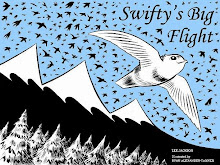The Case for Case Studies
Every time I recommend that a client put together a case study, they groan. Why? Too much work for too little result. Hard to argue with that. But, argue I will.
Here are the top six reasons why companies should develop case studies:
1. They are basic story-telling elements. The more complex your product or service, the more valuable a case study can be. Having case studies allows you to provide examples of how your product or service solved a compelling business problem. Let's say you are putting together a Power Point. You need examples of what you've done. Dust off the case study and voila! instant Power Point.
2. Case studies force you to consider your company's value proposition at a very tactical level. A simple case study describes a challenge, a solution and a result. Considering these three issues more critically allows leaders to make adjustments in tactics and strategy.
3. Case studies provide a window into how the author views the company's value proposition. Assigning a case study can help staff work through issues they need to master. The simple framework gives leaders a more clear understanding of how their staff addresses problems and challenges.
4. The Web demands fresh content. In meeting after meeting, clients are searching for ways to keep their Website content fresh. Case studies fit this bill and can be useful tools for search engine optimization, competitor differentiation and prospect education, among other things. Key words can be linked to products or services in other parts of a company's site or linked to partner or supplier sites.
5. Continuous learning is a good thing. Case studies are among the simplest way to get to the root of an issue not only for successes, but also failures. They're also inexpensive requiring an a couple of hours at most.
6. Nothing bad can happen as a result of creating a case study. They are like the oatmeal of corporate communications. They force you to chew on your approaches and they clean out clogged creativity. Yeah. Yeah. The metaphor's kinda lame. I still think it works, though.
In addition, to these, case studies can be used as attachments in correspondence to prospects to show them what you or your organization is capable of or as supporting material for proposals.
Media also like case studies as they define your "brand in action."
















